|
-
For kilt height, I'm fairly high-waisted, so wearing the kilt at my natural waist actually places it above my navel. If I look where the one I'm currently wearing is currently sitting, my navel's about even with the bottom of my (wide) belt. I've found that if I don't wear my belt tight enough, it tends to fall down more and rest in a weird way around my hips instead of on top of them. In that case, wearing the belt tighter makes the kilt much more comfortable. If your kilt is sitting at an uncomfortable level, maybe try adjusting how tight your belt is, both tighter and looser, and move around in it a bit to see where the kilt just naturally rests. Sometimes it can be a little counterintuitive.
My hose level somewhat depends on temperature. If it's cold, I'll wear my hose higher - just below the knee, just enough that if I bend my knee it sits right in the crook of the bend. And that works very well for me with elastic flashes, adjusted loose. The hose stay up really nicely that way because it is above the calm muscles instead of on them. When it's warm (like now), that ends up being way too warm for me. I'm currently wearing my (cotton) hose without flashes, almost two full handwidths below the middle of the kneecap. Upside is it's cooler. Downsides are, because they sit at just about the widest part of the calm muscles, they're difficult to cuff and they don't stay up as well and I have to pull them back up several times throughout the day.
Sporran: in the kilt I'm currently wearing (USA Kilts casual kilt), I have dual-size belt loops, where they can accommodate regular size belts as well as kilt belts. I run my sporran chain through the inner "regular size" loops and my kilt belt through the outer "large size" loops. In my Sport Kilts, I run both through all of the loops. I've got almost nothing for hips, so it's about the only way for me to keep the sporran at a consistent height. For all three sporrans I have (brand new, probably not the greatest quality), I did have to modify the sporran chain straps to add another hole so I could make them shorter - the tightest hole on them had the sporran hanging way to low for me. With that modification, it hangs about three fingers below the kilt belt. The level somewhat varies as your weight varies. But this is enough that rather than hitting sensitive areas when I'm walking, it tends to bounce off of my upper thighs. Your mileage may vary, however, if your sporran's not as wide or if it doesn't have a fairly hard flat back like all of mine do.
Have you considered using sporran hangers instead of a chain?
-
The Following User Says 'Aye' to MichiganKyle For This Useful Post:
-
-
The Following 3 Users say 'Aye' to The Wizard of BC For This Useful Post:
-
Wow and there it is, the joy of this forum, great, straightforward, and understandable information that can change your world.
Thank you.
I have been trying to fit my kilts all to the same place, which I now know to be wrong 
My kilts are all cheap ones so the fell is anything from a few inches down to nothing at all, is it possible for me to add the fell to my cheap kilts to "tailor" them a little to hang better?
I know they will never be as good as a properly tailored kilt, but would be nice to improve the ones I can afford 
I have 1 viscose (not PV) kilt in tartan, 2 cotton plain black kilts, and a utility kilt, do you think I could improve these or just have to put up with the way they hang until I can afford a decent wool kilt?
I have ordered an ex-hire 8-yard medium weight wool kilt, but with the lockdown, I am not sure when it will arrive.
Stay safe everyone.
-
The Following User Says 'Aye' to Red1leader For This Useful Post:
-
 Originally Posted by Red1leader

Is it possible for me to add the fell to my cheap kilts to "tailor" them a little to hang better?
The fell is actually the entire length of the stitched part of the pleats. The top of the fell is at the top of the kilt, and the bottom of the fell is at the hip line. In the pic below, the bottom of the fell is below the bottom of the picture. A properly fitting kilt has the smallest circumference at the waist. The rise flares above the waist so that the kilt can be buckled comfortably at the waist and not sag down.

So you can't force the kilt to sit higher (i.e., add a rise) by simply making the fell longer by stitching the pleats down farther, because the pleats taper from the bottom of the fell to the waist. If you stitch a longer fell, the kilt will still sag to sit wherever the kiltmaker made it to fit.
The only way to add a rise if a kilt has no rise is to add fabric to the top of the kilt. That's pretty much a non-starter. If a kilt is made without a rise, you need to wear it with the top of the kilt at your waist. If the kilt is made with a rise but without any flare, you're stuck with having the kilt sag down to your waist when you buckle it.
-
The Following 2 Users say 'Aye' to Barb T For This Useful Post:
-
Barb is correct in naming the parts.
But this sentence pretty well sums up the issue -
My kilts are all cheap ones so the fell is anything from a few inches down to nothing at all, is it possible for me to add the fell to my cheap kilts to "tailor" them a little to hang better?
While it is pretty likely that the kilts you have, have a sewn down area, it is also likely that their construction is different than what Barb and I have been using as examples.
I suspect that your garments are constructed similar to how blue jeans are made. This is where the outer fabric and the stitching are what give the garment it strength and shape.
If you were to look inside the kilts in both Barb's and my examples you would find something different. In both of our examples it is not the outer fabric, nor the stitching, that gives the garment its strength and its shape.
Both of us make kilts with an older method of garment construction.
If you grab the ends of kilt fabric - and pull - you will easily see that the fabric is supple and stretchy.
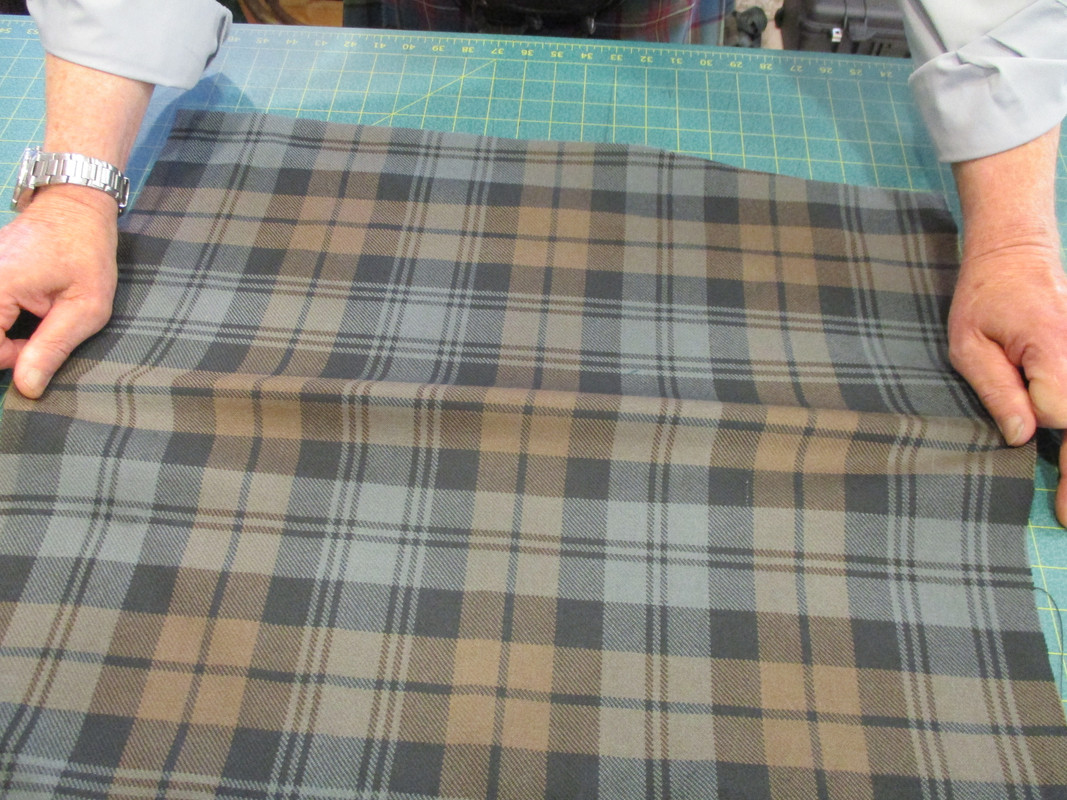
If you try to make a garment like a pair of blue jeans from this type of fabric, in very little time, it would stretch out of shape. Soon after, the fabric would fail.
So, kilts are made with a different method of garment construction. A method developed and perfected before today's sewing patterns, ultra durable denim and polyester/cotton fabrics and super strong sewing machine sewn seams.
While this older method of construction was the norm for hundreds of years it is quite rare today. A man's custom suit, some haute couture clothing, and kilts are some of the last garments made this way.
Steve Ashton
www.freedomkilts.com
Skype (webcam enabled) thewizardofbc
I wear the kilt because: Swish + Swagger = Swoon.
-
The Following User Says 'Aye' to The Wizard of BC For This Useful Post:
-
Perhaps the best way to illustrate this different method of construction is to ask you to look inside your Acrylic kilt.
I would suspect that you will find some sort of liner inside.
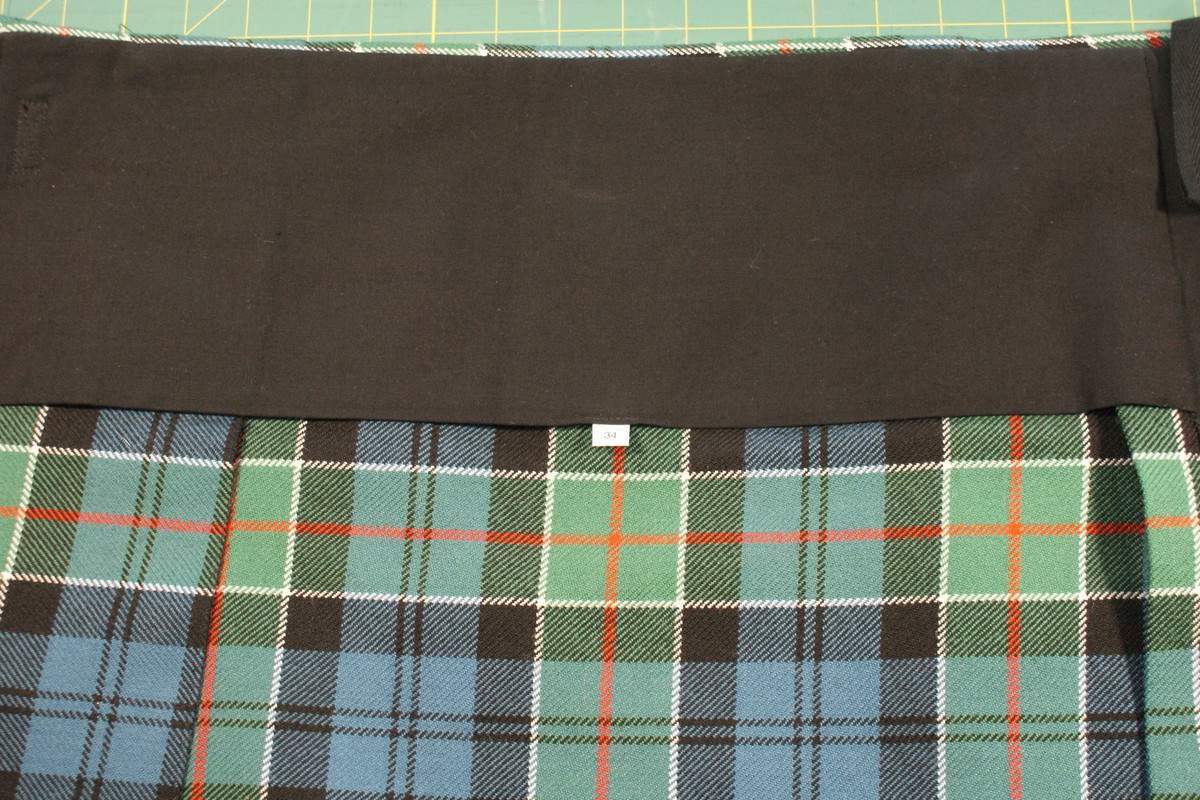
The reason that this liner is put in there is because kilts are supposed to have a liner.
But - If you lift that liner, you will find little, or perhaps even nothing, underneath.
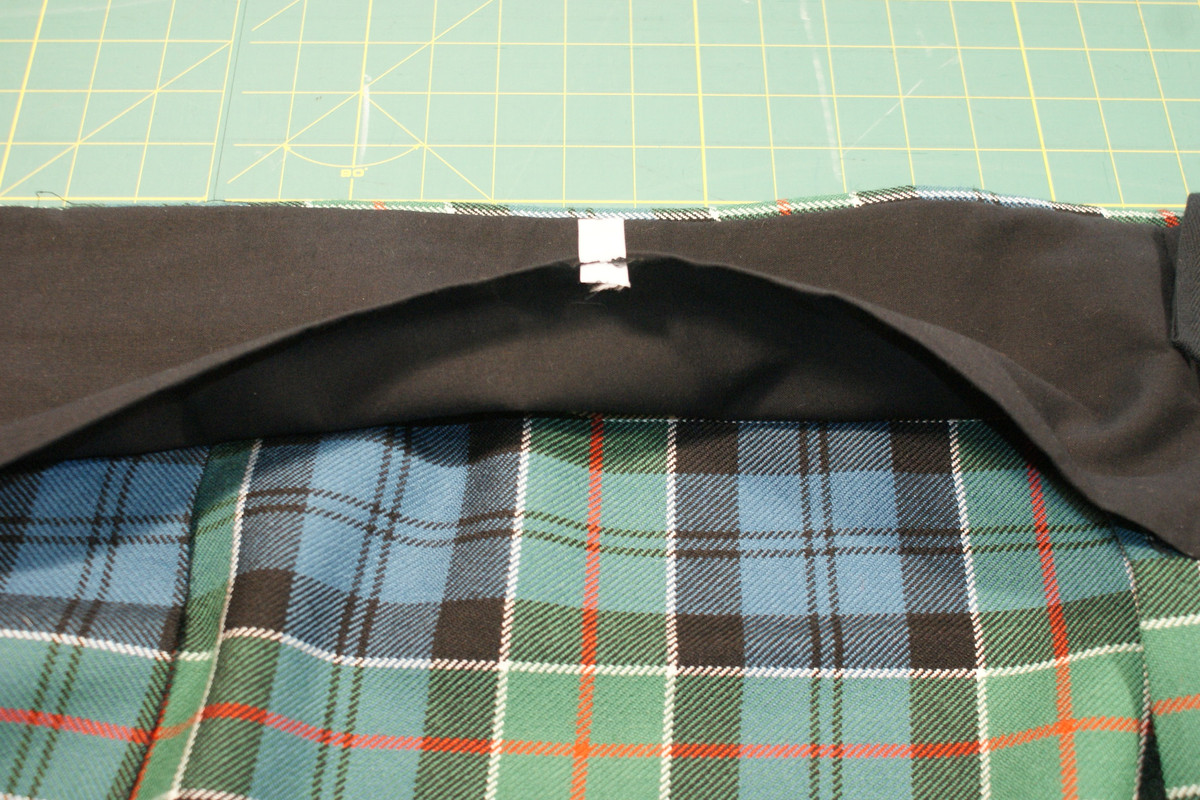
Many people, when they see this liner for the first time, assume that its purpose is to keep the kilt clean.
Well, if that were true, the liner would be removable and washable.
The actual purpose of a liner is to hide the elements built to the inside of garments that do not, or cannot, rely on just the strength of the outer fabric and the lines of stitching, for the total strength and shape of the garment.
If you were to lift the liner of the kilts in Barb and my examples - this is similar to what you would find.

Or something like this -
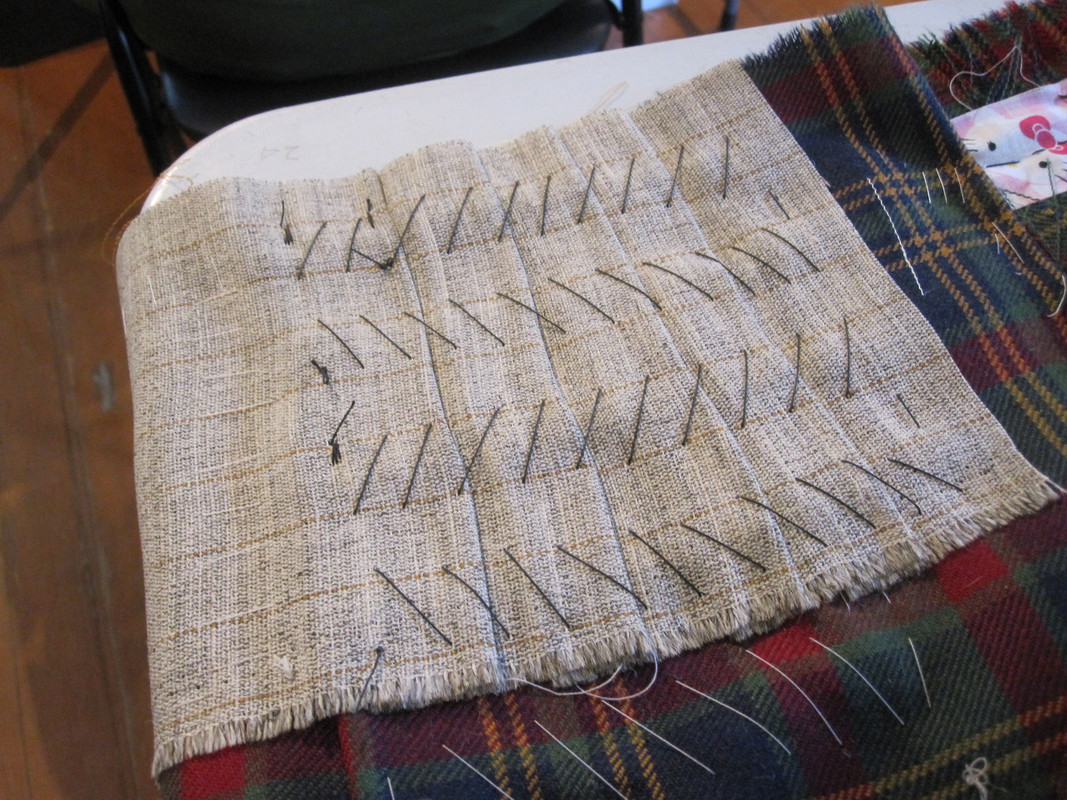
The white or cream colored stuff is called interfacing. The black strip (or in the bottom example the "hello kitty" print fabric) is called stabilizer.
If you were to turn a garment made like this inside out you would find that when you put it on, you are actually strapping on the interfacing and stabilizer. Similar to the garment having a built-in belt and corset.
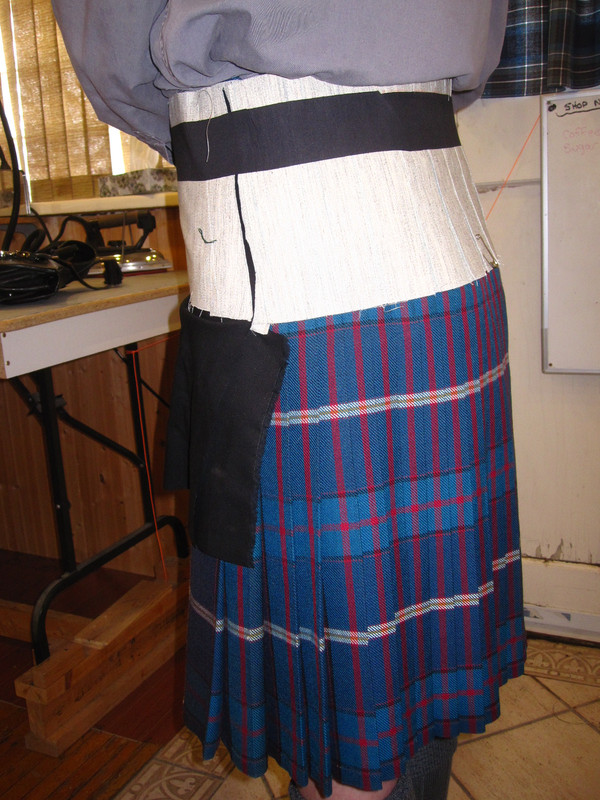
The strength, and ultimately the shape, of the garment comes from these internal elements. This allows the outer fabric to drape naturally without stress pulling on the fabric distorting it out of shape.
While some kilts made without these internal elements can, and have, been retrofitted, some cannot. And it is a daunting job for someone who is not an experienced kilt maker to try.
I would wear your kilts just the way they are. They serve you well and are perfect for their intended purpose. They are less expensive than a custom made wool kilt and may last as long as any other garment made in a similar fashion.
If you would like to research this idea of the internal elements built into a kilt may I suggest two threads which may be helpful.
The first is a kilt that seemed to stretch out of shape and change size when it was worn over a period.
http://www.xmarksthescot.com/forum/s...ad.php?t=70205
The second is a kilt that was re-built by someone who may not have known what these elements are designed to do.
http://www.xmarksthescot.com/forum/s...ad.php?t=95523
Last edited by The Wizard of BC; 3rd May 20 at 10:59 AM.
Steve Ashton
www.freedomkilts.com
Skype (webcam enabled) thewizardofbc
I wear the kilt because: Swish + Swagger = Swoon.
-
The Following 6 Users say 'Aye' to The Wizard of BC For This Useful Post:
-
When I make a kilt to wear with a belt rather than straps there is a waistband and the belt loops are on the band, not the pleats.
Having the luxury of making myself a new kilt whenever I feel that I would like one, I can also opt for various features as long as they are within the normal limits of being suitable for purpose.
Anne the Pleater
I presume to dictate to no man what he shall eat or drink or wherewithal he shall be clothed."
-- The Hon. Stuart Ruaidri Erskine, The Kilt & How to Wear It, 1901.
-
The Following 2 Users say 'Aye' to Pleater For This Useful Post:
-
 Originally Posted by Pleater

Having the luxury of making myself a new kilt whenever I feel that I would like one
Anne the Pleater
Oh you are so lucky, wish I could do that, cost wise how much cheaper is it to make your own?
I am very tempted but I need to build up my confidence first 
-
 Posting Permissions
Posting Permissions
- You may not post new threads
- You may not post replies
- You may not post attachments
- You may not edit your posts
-
Forum Rules
|
|









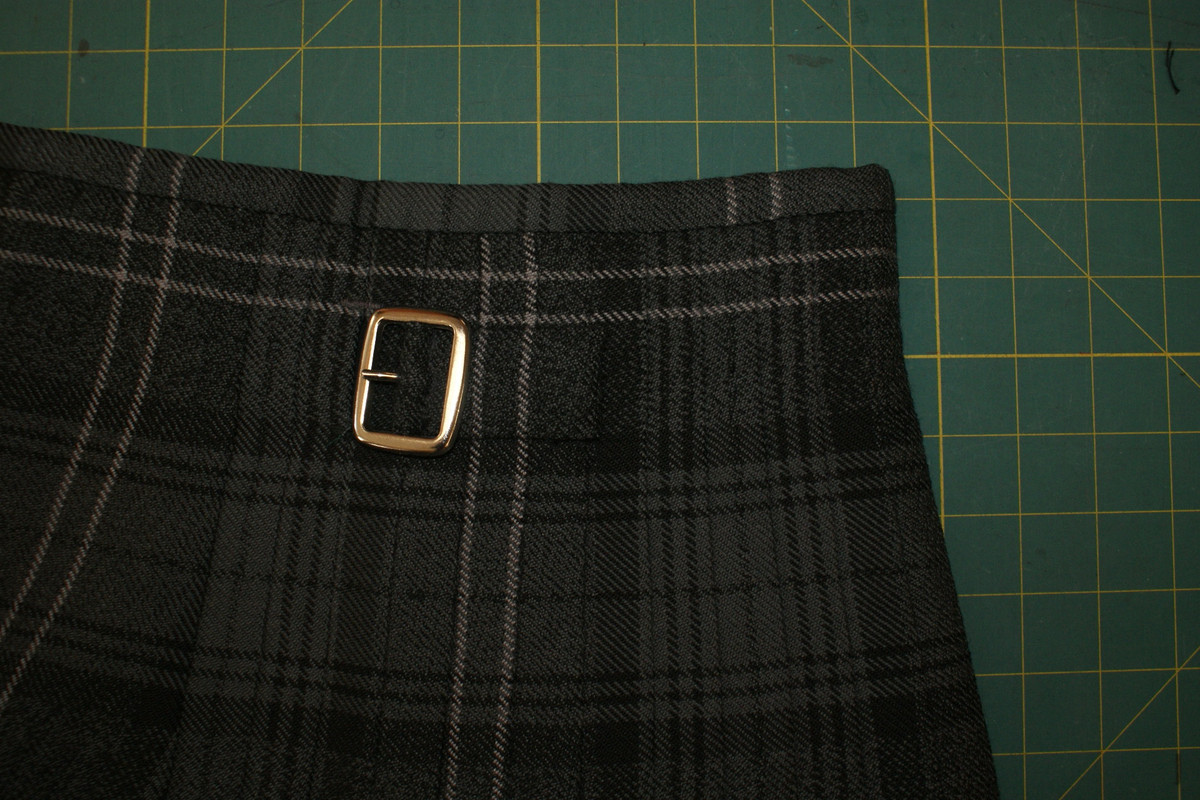
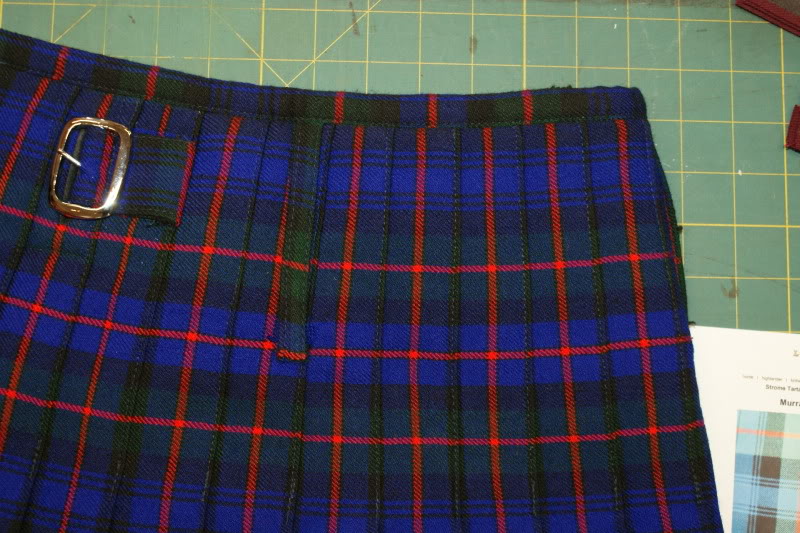


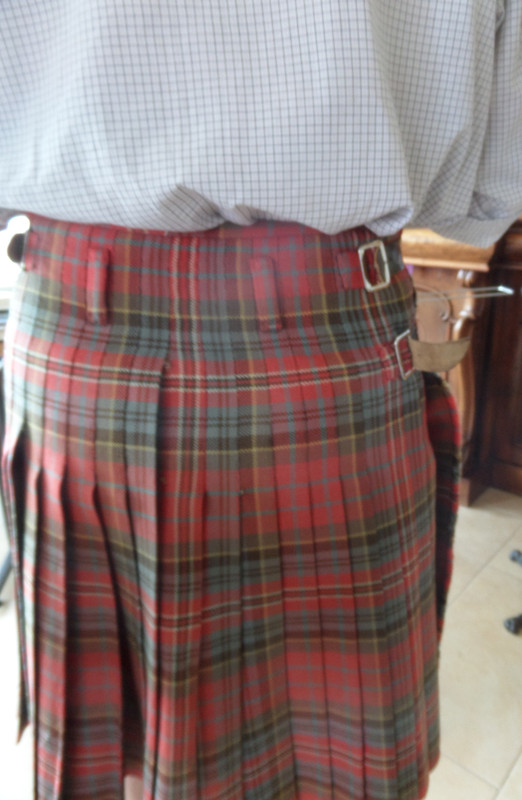

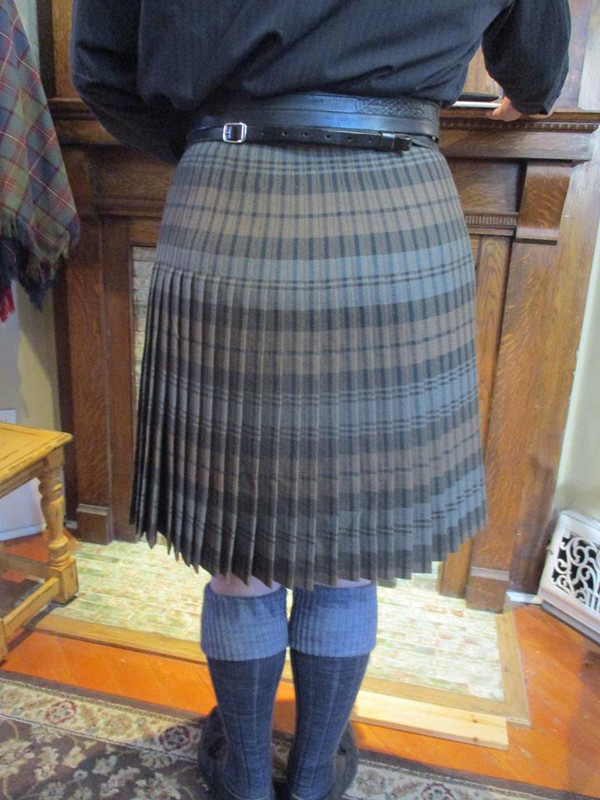


















Bookmarks